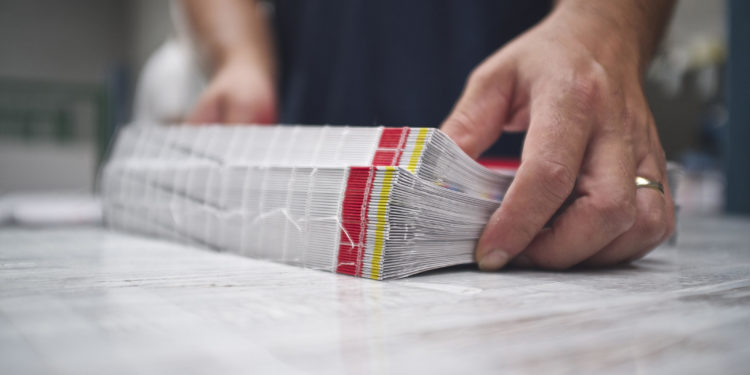Book binding is a centuries-old craft that has evolved over time, transforming from a necessity to a form of art. Luxury book binding, in particular, has carved a niche for itself in the world of bibliophiles and collectors. This article delves into the intricate world of luxury book binding, exploring its history, techniques, materials, and the value it adds to a book.
The History of Luxury Book Binding
Luxury book binding traces its roots back to the Middle Ages, when books were considered valuable possessions. Monks in monasteries across Europe painstakingly hand-bound books, often embellishing them with gold and precious stones. These books were not just functional items but also symbols of wealth and status.
Over the centuries, the art of book binding has evolved, with different periods and cultures contributing their unique styles and techniques. For instance, the Renaissance saw the introduction of intricate designs and motifs, while the Victorian era was known for its lavish use of gold leaf and embossing.
Techniques in Luxury Book Binding and Printing
Several types of book binding are used in producing luxury books, each adding a unique touch to the finished product. Some of these techniques have been passed down through generations, while others are recent innovations.
One of the most traditional techniques is hand-sewing, in which the pages of the book are stitched together using a needle and thread. This not only ensures the book’s durability but also adds a touch of authenticity and craftsmanship.
Another popular technique is gold tooling, where designs are embossed onto the book cover using gold leaf. This process requires high skill and precision, as the gold leaf is extremely delicate and can easily be damaged.
Modern Techniques in Luxury Book Binding
While traditional techniques continue to be used, modern technology has also found its way into luxury book printing. Laser cutting, for instance, creates intricate designs and patterns on the boosk cover. Similarly, digital printing reproduces high-quality images and graphics on the book pages.
Despite these technological advancements, the essence of binding remains the same – to create a book that is a work of art in itself.
Materials Used in Luxury Book Binding
The materials used in luxury book binding are what set it apart from regular book binding. From the paper to the cover, every element is carefully chosen to enhance the book’s overall aesthetic and tactile experience.
The paper used in luxury books is often handmade, with a rich texture and weight that adds to the book’s appeal. The book cover, on the other hand, is typically made from high-quality leather or cloth, often embellished with gold leaf or other decorative elements.
Other materials used in book binding include ribbons, marbled endpapers, and protective slipcases, all of which add to the book’s luxurious feel.
The Value of Luxury Book Binding
Luxury binding adds immense value to a book, transforming it from a mere object into a cherished possession. The time, effort, and skill that go into creating a luxury-bound book make it a unique piece of art worth collecting.
Moreover, it can significantly enhance the reading experience. The feel of the textured paper, the smell of the leather cover, the sight of the gold embossed design – all these sensory experiences make reading a luxury bound book a truly immersive experience.
Finally, luxury book binding can also increase a book’s monetary value. Rare books that have been luxuriously bound are often sought after by collectors and can fetch high prices at auctions.
Whether it’s a first edition of a classic novel, a personal diary, or a corporate gift, a luxury bound book is a testament to the enduring appeal of the printed word.
As we move further into the digital age, the art of hand binding books reminds us of the tactile pleasure of reading a physical book. It celebrates the book as an object, an experience, and a work of art.











































































